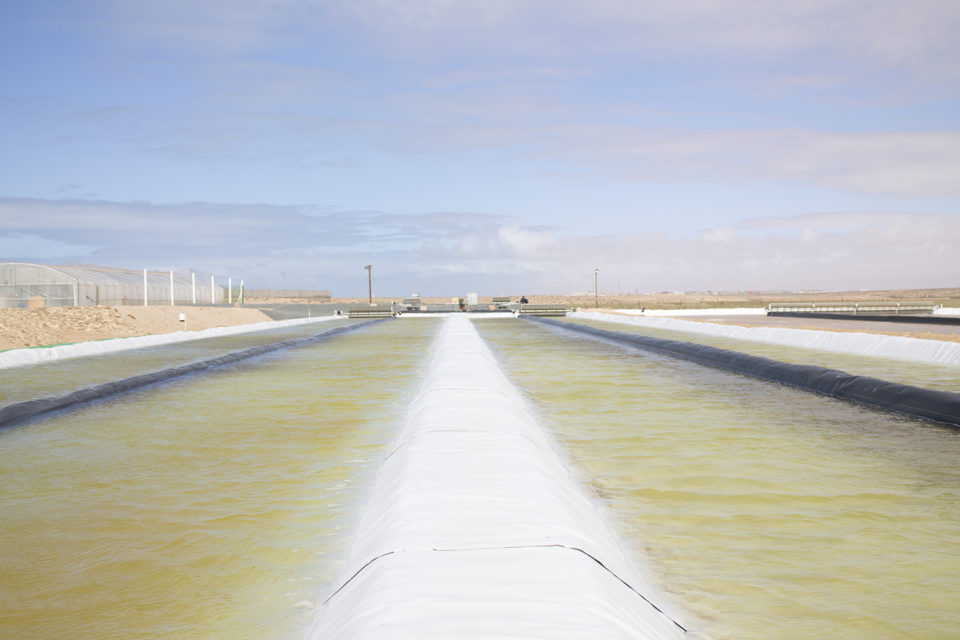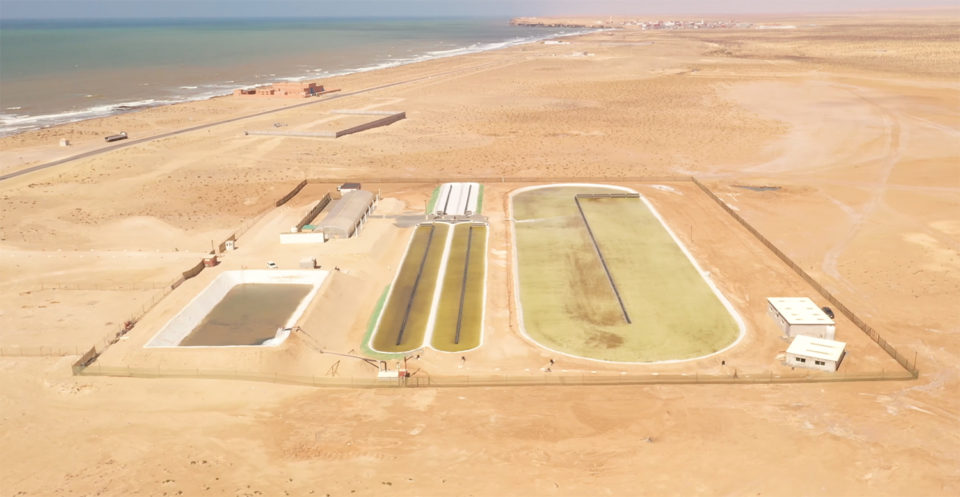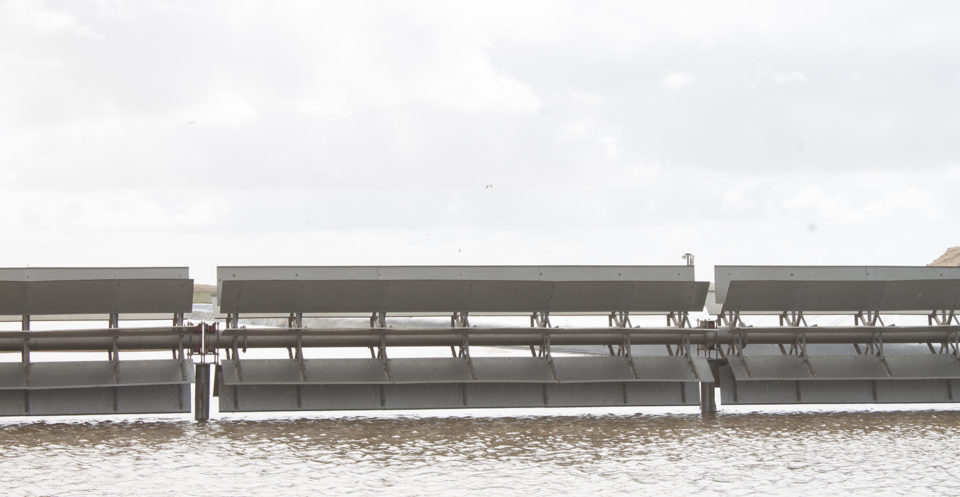Morocco-based company aims to make its mark in aquafeed industry with algal meal

Young company Susewi has a big ambition: To become the world’s largest producer of algal biomass. And following recent commercial-scale trials in Morocco, the company appears to be on the right path.
According to founding chief executive Keith Coleman, who set up Susewi with Raffael Jovine in 2013, microalgae are themost successful organisms on the planet. They can convert sunlight into food 20 times more efficiently than cultivable crops and absorb and store carbon more efficiently than any other living organism. For each metric ton (MT) of algae produced, 2.8 MT of carbon dioxide is absorbed.
Microalgae are also the fastest growing, highest yielding, most nutritious aquatic plant and this versatility lends algae to applications in feed, human food, fertilizer, chemicals and pharmaceuticals.With so many applications to choose from, Coleman and Jovine, who is the company’s chief scientist, are concentrating initially on producing high-protein microalgae, in the form of a dried meal, as a scalable and sustainable alternative to fishmeal.
“We have developed, patented and fully tested the technology that gives us the means to recreate the natural growing conditions of algae, which we can use to solve some of the world’s intractable problems: feeding people alternative protein and cleaning the atmosphere of carbon, while using minimal amounts of renewable energy,” Coleman told the Advocate.
The technology used in the grow-out system combines Jovine’s knowledge of how algae behave, with tried and tested, large-scale pond engineering.
“We operate in open ponds, and the whole system has minimal environmental footprint. As our name Susewi suggests, the only elements we use in our production are sunlight, seawater and wind (atmospheric carbon dioxide),” said Jovine. “The byproducts are freshwater, oxygen and de-acidified ocean.”

Susewi’s aim is to work towards an algal system that can naturally produce hundreds of thousands of metric tons of alternative protein in desert climates. Jovine, an expert in algal bloom physiology, designed the process to be flexible, with the ability to grow multiple species for multiple applications, in different ponds.
In Morocco, where the commercial trials have been taking placeon non-arable desert land, Jovine and his team found 1,600 natural algae strains to choose from.
“The algae strain we cultivate has been selected for its protein content, which is greater than 50 percent, and its balance of nutrients, including the omega-3 fatty acids EPA and DHA. However, we are not currently in the business of extracting these high value speciality oils,” he said.
So how did it all begin?
“I was studying algal blooms, when a friend came to me and said he was finding it difficult to grow biofuels because they were difficult to feed and it was expensive to pump water. This puzzled me, because every pond naturally grows algae, and the ocean produces millions of tons, so I started looking into how one might be able to extract value from the ocean on a large scale,” said Jovine. He soon realized there was no point in “trying to reinvent the wheel.”
https://www.aquaculturealliance.org/advocate/pond-cultivated-algae-slimy-superhero-aquafeeds/
“Shrimp farmers are good at building coastal ponds and using gravity to transfer water, the mining industry does an excellent job removing the ‘fines’, which are particles less than 7 millimeters in size, from process water, and dairy processors have good membrane technology that could be used to help with desalting,” said Jovine.
Over time he combined all of these techniques into a consistent production system and, together with Coleman, started off with trials in South Africa and repeated them in the desert in Oman. They now have a full-scale production system on the Moroccan coast.
The system replicates natural, beneficial algal blooms, which are the base of the marine food-chain, and uses those best suited to exploit the local environment. A major benefit is that the production method can turn empty salt flats into a highly productive biological cultivation system, without requiring freshwater and can be used all year round.
“We have shown that the process is successful in all climates and across all the seasons, from the rain and cold of a South African winter, to the 50-degree heat of a desert summer. Raffael’s brilliant innovation doesn’t compete with nature; it allows nature to do what nature does, so his system could be used in countries from Chile and Peru, to Australia and Namibia. Governments are interested because it uses natural resources and provides food security and employment,” said Coleman.

Jovine explained that he starts each strain off in a laboratory environment, then moves it into a controlled greenhouse environment, where it is nurtured until ready to be moved into open seawater ponds. Here the algae bloom effectively in the right conditions, ready for harvesting, desalting and drying into a meal suitable for incorporation into fish feed.
A digital scale model has been built of the production system, which enables investors and interested parties to understand how it works. According to Coleman, interest is running high in the project, with several governments working with the company to identify potential development sites.
“Oman has put up 3,500 hectares of land and Morocco is providing excellent support, with 6,000 hectares allocated to our project, which will allow us to produce 60,000 tons of microalgae per annum. This is three times more micro-algae than the world’s total production in 2018, which is a very exciting prospect,” said Coleman.
We are excited for the possibilities this creates for the world.
He was also pleased that feed companies are welcoming high-quality fishmeal alternatives, particularly for use in salmonid diets, because these fish benefit from a high omega-3 content.
Undertaking feed trials on salmon and trout was an obvious next step, and these have been carried out in partnership with University of Plymouth in the UK. The trials were completed earlier this year and have already resulted in a supply agreement with one of the world’s largest fish feed producers.
“Our research has demonstrated that SeSeWi’s innovative algae-based meals have excellent nutritional profiles and are readily accepted by salmon and rainbow trout in feeds containing as much as 20 percent inclusion level. In the trials the algal meals supported good growth performance and feed utilisation and an investigation of gut health did not reveal any negative impacts,”said Daniel Merrifield, associate professor of fish health and nutrition at the University of Plymouth.
For Coleman and Jovine, applying their intellectual property and working with potential feed and alternative protein customers for the algal biomass, are essential next steps. Until now they have kept their heads down, maintained a low profile, and worked to prove the technology. Now that they know it works, they are keen to see it scaled up, ready to deliver substantial quantities to the market.
“We have known for many years that algae-based products can address the many challenges of population growth and climate change, such as healthy, sustainable food, natural, alternative plastics, smart fertilizer, a complete substitute for fishmeal and much more,” said Coleman. “We are now well on the way to cracking the challenge of producing algae on a very large scale, completely naturally and sustainably. We are excited, not just for ourselves and our company, but for the possibilities this creates for the world.”
Follow the Advocate on Twitter @GAA_Advocate
Now that you've finished reading the article ...
… we hope you’ll consider supporting our mission to document the evolution of the global aquaculture industry and share our vast network of contributors’ expansive knowledge every week.
By becoming a Global Seafood Alliance member, you’re ensuring that all of the pre-competitive work we do through member benefits, resources and events can continue. Individual membership costs just $50 a year. GSA individual and corporate members receive complimentary access to a series of GOAL virtual events beginning in April. Join now.
Not a GSA member? Join us.
Author
-
Nicki Holmyard
Nicki Holmyard has written about the seafood industry for longer than she cares to remember! A committed pescetarian, she is also a partner in the UK’s first fully offshore rope-grown mussel farm.
Tagged With
Related Posts

Aquafeeds
Algae alternative: Chlorella studied as protein source in tilapia feeds
Chlorella and other species have potential as protein sources in aquafeeds. In trials with tilapia fry raised in a recirculating system, the fish received a fishmeal-based control diet or feeds with portions of the fishmeal replaced by Chlorella.

Aquafeeds
A new nutrient for aquaculture, from microbes that consume carbon waste
Biotechnology firm NovoNutrients aims to produce a line of nutraceutical aquafeed additives as well as a bulk feed ingredient that can supplement fishmeal. Its process includes feeding carbon dioxide from industrial gas to a “microbial consortium” starring hydrogen-oxidizing bacteria.

Innovation & Investment
Aquafeed ingredient AlgaPrime wins GAA Innovation Award
A proliferation of alternative feed ingredients has allowed aquaculture to extend the natural resources it depends on. AlgaPrime, packed with the long-chain omega-3 fatty acid DHA, is being recognized as a game-changing innovation for aquaculture feeds.

Innovation & Investment
Algae innovators aim to freeze out early-stage shrimp losses
A greenhouse in Belgium believes its innovative shrimp feed product, made from freeze-dried microalgae, packs the necessary nutrients for the crustacean’s most vulnerable life stage: the first three days of its life.


